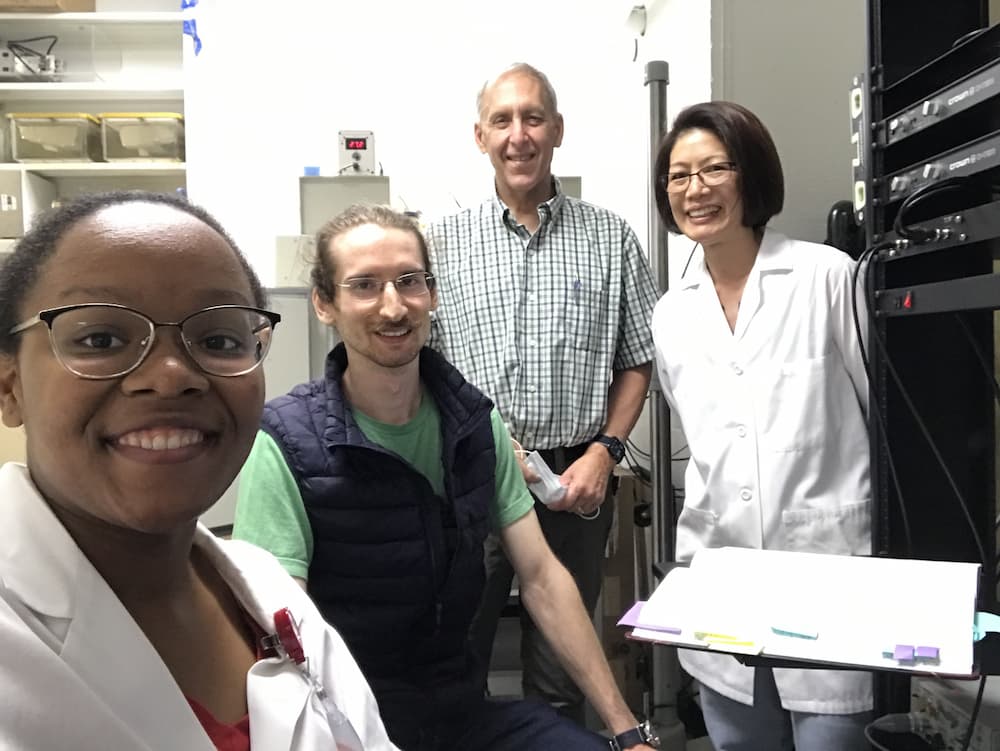
Vetter | Yee Auditory Neuroscience Lab
By: Dr. Douglas Vetter, Program Director
The Vetter/Yee Auditory Neuroscience Lab is housed in the Research Wing (North Building) and is under the oversight of the Dept. of Neurobiology and Anatomical Sciences. Dr. Doug Vetter (PIN Director) and Dr. Kathy Yee (Clinical Anatomy) share lab space and define common research directions for the lab.
The main topics under investigation center on mechanisms responsible for maintaining hearing health across the lifespan of individuals, and setting susceptibility thresholds for hearing loss following various insults.. These insults historically have centered almost exclusively on exposures to loud sound. However, it has become increasingly clear that traumatic brain injury (TBI) as mild as “simple” concussion (considered a mild (m) TBI) can have significant effects on hearing health. Yet these medical problems go largely unreported. Individuals experiencing mTBI include the usual candidates that come readily to mind by most people- military personnel engaged in hostile actions, sports participants, etc. But dwarfing these numbers of people experiencing mTBI are individuals suffering from domestic violence, which can result in (often) repeated mTBIs. Over the past few years, the Vetter/Yee labs have discovered that many molecular signaling systems involved in cellular homeostasis and stress responses are expressed in the inner ear. Recent research directed by Drs. Vetter and Yee and carried out by them and a 4th year Program in Neuroscience graduate student, Charles Barnes, and a summer Medical Student Research Program (MSRP) student, Kimberly Gilmore, have demonstrated that mTBI sets into motion cell signaling pathways we previously defined as initiated by exposures to loud sounds. Using targeted genetic ablation of genes responsible for initiating and modulating local steroid hormone synthesis/release in subsets of cells in the cochlea, Charles Barnes is showing that mTBI damages hearing beyond that observed in genetically normal animals. These results suggest that the products of the genes under investigation may represent new therapeutic drug targets to mitigate damage from both exposure to loud sounds and physical head injuries. Kimberly Gilmore has investigated the inflammatory response of the central auditory pathway following mTBI and is mapping the regions most affected by single and multiple mTBIs. Because the auditory pathways are highly parallel but also convey discrete attributes of the auditory scene across separate fiber pathways and brain nuclei, understanding where the highest degree of inflammation and damage exists can be used to predict auditory deficits that may accompany a mTBI. Finally, Dr. Yee is also investigating the effects of simulated high-intensity noise experienced by premature neonates when housed in incubators of the NICU. Initial findings suggest that exposure to these sounds during late embryonic development of mice (equivalent to late in utero stages of humans) results in altered central auditory system function that includes delays in the timing and response amplitudes of sound-evoked EEG-like activity following sound stimuli.


